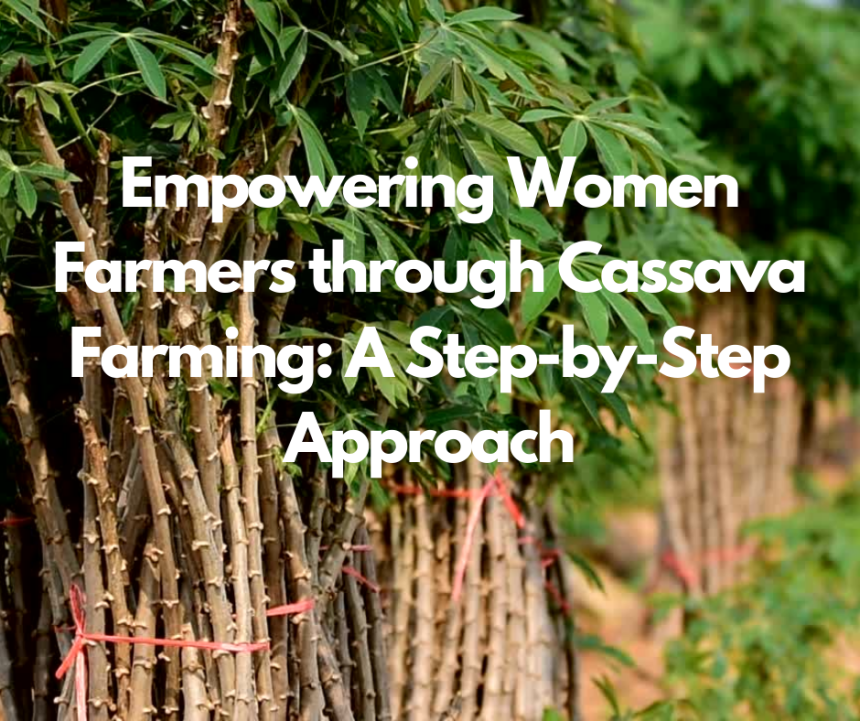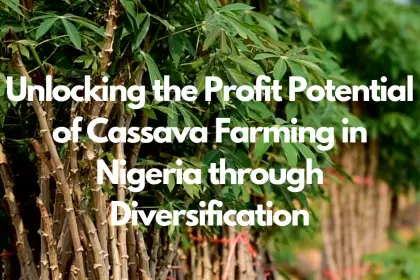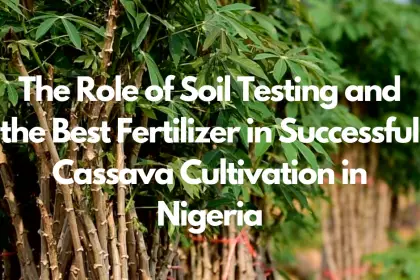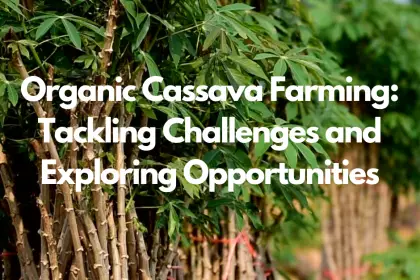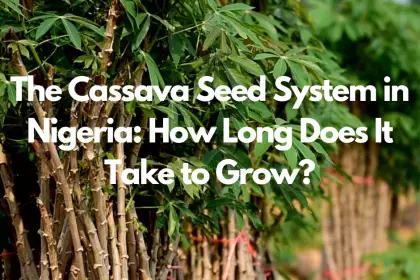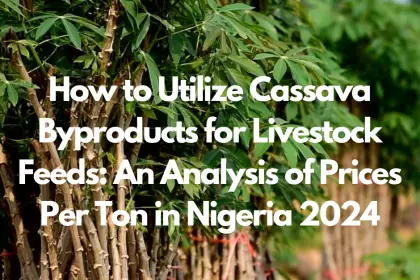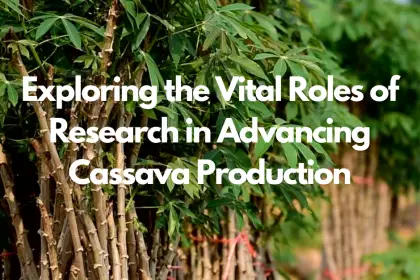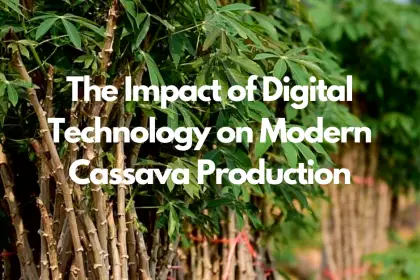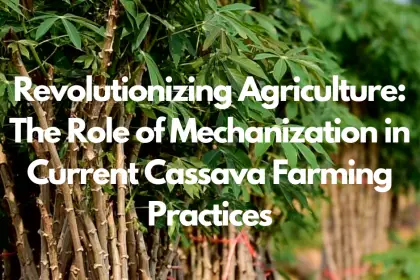In the agricultural landscapes of Oyo State, Nigeria, the gender dynamics in cassava farming play a pivotal role in shaping the empowerment of women farmers. This study delves into how both men and women contribute significantly to cassava production, yet emphasizes the heightened involvement of adult males and females over the youth in these farming activities. Understanding these gender dynamics not only highlights the potential for increased agricultural productivity but also sets the stage for enhancing resource empowerment among farmers.
The importance of gender sensitivity and strategic planning in cassava farming cannot be overlooked, especially when considering the empowerment of women farmers. As this article explores, overcoming challenges faced by women cassava farmers and capitalizing on empowerment through agriculture can lead to substantial social and economic benefits. The lens of this discussion will also include policy and social interventions tailored towards gender equity in agricultural practices, paving the way for success stories that underscore the resilience and significant contributions of women in cassava farming in Nigeria.
The Role of Women in Cassava Production
In the agricultural sector, women play a pivotal role, especially in the realm of cassava production. Their contributions span from the initial planting stages to the final processing and marketing phases, underscoring the integral role they occupy in both subsistence and commercial agriculture. Notably, in Nigeria, women are predominantly responsible for the labor associated with cassava production and processing, a task that directly impacts household food security and family income enhancement.
- Contribution to Global Food Production:
-
- Women contribute to over 50% of global food production, with their participation reaching up to 80% in African countries.
- Specifically, in low and middle-income countries, women make up 43% of the agricultural labor force.
- This involvement is crucial in small-scale farms, which produce almost 80% of the world’s food.
- Barriers to Women’s Productivity:
-
- Despite their significant contributions, women farmers face numerous obstacles, including limited access to land, loans, and machinery compared to their male counterparts.
- The dual burden of paid work and unpaid childcare/home labor further exacerbates these challenges.
- Impact of Education and Access to Resources:
-
- Women with higher educational attainment are more likely to engage in cassava production and processing, contributing significantly to local economic development.
- Access to modern technology, such as tractors for ploughing, can enhance productivity, showcasing the potential for empowerment through improved agricultural practices.
This overview not only highlights the critical role of women in cassava farming but also underscores the need for targeted interventions to address the barriers they face, thereby unlocking their full potential for contributing to agricultural productivity and economic prosperity.
Challenges Faced by Women Cassava Farmers
Women cassava farmers in Nigeria and beyond face a multitude of challenges that significantly impede their productivity and ability to contribute effectively to agricultural development. These challenges can be broadly categorized into three main areas: access to resources, societal and policy barriers, and personal constraints.
- Access to Resources
-
- Limited access to land, water, seeds, and credit, crucial for farming activities.
- Inadequate access to agricultural inputs like quality seeds and fertilizers.
- Restricted access to extension services that offer technical support and information.
- Societal and Policy Barriers
-
- Gender bias and societal norms that prevent recognition as head of the farm.
- Exclusion from state-led efforts to improve land and water management and agricultural research.
- Vulnerability to gender-based violence, including sexual harassment and exploitation in agricultural settings.
- Personal Constraints
-
- The dual burden of unpaid care work alongside farming responsibilities.
- Marital status and education levels affecting participation and access to information.
- Challenges in cassava processing, such as difficulties in roasting during gari production and poor knowledge on storage options.
These challenges collectively contribute to reduced agricultural productivity and hinder the empowerment of women in the cassava farming sector. Addressing these issues is crucial for enhancing gender sensitivity and planning in agricultural productivity, leading towards the empowerment of women farmers in Nigeria and elsewhere.
Empowerment through Agriculture
Empowerment through agriculture emerges as a transformative strategy, significantly impacting the lives of women cassava farmers by enhancing their productivity, income, and decision-making authority. Initiatives such as the PIND Foundation’s cassava demonstration plots and the APPEALS Project have played pivotal roles in this transformation. These efforts showcase the potential of targeted training and intervention programs in elevating women’s roles in agriculture.
- Training and Innovation:
-
- Veronica Njoku’s experience with the PIND Foundation highlights the impact of adopting new farming techniques on cassava yield.
- The Osara Women Cassava Processing MPCS’s venture into producing odorless Fufu flour and high-quality cassava flour post-training exemplifies product diversification and innovation.
- Collaborations for Growth:
-
- Collaborative efforts between CAVA2 and entities like Misenani Agrovet Services Ltd in Tanzania, and the establishment of a thriving ethanol industry in Nigeria, demonstrate the importance of partnerships between farmers and businesses. These collaborations not only boost productivity but also ensure sustainability and resilience against climate change.
- Empowerment and Policy Advocacy:
-
- The establishment of a WFO women’s committee signifies a strategic move towards advocating for women farmers’ rights, access to resources, and recognition. This committee’s role in promoting gender equity in agriculture underscores the necessity of policy support and social awareness to achieve gender sensitivity in agricultural planning and productivity.
These initiatives collectively underscore the importance of education, training, and access to resources in empowering women farmers. By addressing the gender gap in agriculture, these efforts contribute to economic growth, food security, and the overall empowerment of women in the agricultural sector.
Policy and Social Interventions
Despite the Maputo Declaration on Food and Agriculture in 2003, where African countries pledged to allocate 10% of their national budgets to agriculture by 2008, the conditions for women smallholder farmers have seen limited improvement. This highlights a critical gap in the implementation and effectiveness of policies aimed at supporting this demographic. To address these challenges, a multifaceted approach to policy and social interventions is essential:
- Institutional Changes and Policy Recommendations:
-
- Recognize women’s knowledge and expertise in agriculture.
- Ensure women’s inclusion in policy-making processes.
- Adopt new technologies and practices to combat climate change.
- Implement gender-responsive climate policies and programs.
- Data-Driven Policies:
-
- Policies and interventions must be informed by accurate data and gender analysis.
- Consider the diverse roles and contexts of women in agriculture to tailor interventions effectively.
- Successful Interventions:
-
- The CAVA2 project, backed by the Bill & Melinda Gates Foundation, exemplifies successful intervention, improving the lives of smallholder farmers in Nigeria and Ghana through training in agronomic practices, seed multiplication, and cassava processing for value-added products.
- The Alito Cassava Growers’ Association, supported by CAVA2, benefited significantly from these initiatives, showcasing the potential impact of well-designed and implemented programs.
Case Studies of Successful Women in Cassava Farming
Gilbert Okiror, hailing from Kapiri sub-county in the Ngora District of eastern Uganda, exemplifies the potential for individual success and contribution to the agricultural sector through cassava farming. His enterprise, Koloin HQCF Processing Technology, stands as a testament to the effectiveness of the CAVA2 project in fostering agricultural entrepreneurship. Okiror’s business focuses on the production of high-quality cassava flour, chips, and grits, utilizing advanced processing technologies to ensure product excellence. The key aspects of his venture include:
- Innovative Processing Techniques: Adoption of state-of-the-art processing methods to produce high-quality cassava flour, chips, and grits, setting a benchmark for product quality in the region.
- Impact on Local Economy: The establishment of Koloin HQCF Processing Technology has not only contributed to Okiror’s success but has also played a significant role in boosting the local economy by creating employment opportunities and encouraging cassava cultivation among local farmers.
- CAVA2’s Role: The support from the CAVA2 project was instrumental in providing Okiror with the necessary skills, knowledge, and resources to kickstart and sustain his business. This collaboration highlights the importance of targeted agricultural interventions in empowering individuals and enhancing agricultural productivity.
Okiror’s journey from a local cassava farmer to a successful entrepreneur in the agricultural sector underscores the transformative power of agricultural empowerment initiatives. His success story serves as an inspiration for aspiring entrepreneurs in the agricultural sector, particularly in the cassava farming community.
Conclusion
Throughout this exploration of cassava farming and its pivotal role in empowering women farmers in Oyo State, Nigeria, it’s clear that while significant strides have been made, challenges still persist. The importance of recognizing and harnessing the contributions of women to cassava production has been underscored, highlighting the barriers they face such as limited access to resources and societal norms. Despite these obstacles, the empowerment of women through agriculture presents a potent vehicle for socio-economic development, driven by initiatives that support and recognize their invaluable contributions to the agricultural sector.
As we move forward, it’s imperative that targeted interventions and policy reforms continue to be developed and implemented. These should aim not only to mitigate the challenges identified but also to amplify the success stories of individuals and communities thriving through cassava farming. Supporting women cassava farmers through education, access to resources, and meaningful policy advocacy will not only empower them but also contribute significantly to local economies and food security. The journey of empowering women in agriculture is both a testament to resilience and a beacon of hope for achieving gender equity and sustainable development in rural communities.
FAQs
What is the contribution of women to cassava farming?
Women play a significant role in cassava farming, primarily focusing on household consumption. They consistently participate in the farming process with a high participation index of 3.02, indicating frequent involvement. Their main activities include cultivating the land, cutting cassava sticks, frying, and preparing the fire for cooking.
Can you outline the primary phases of cassava cultivation?
The farming of cassava involves a systematic process that can be broken down into several key stages:
- Selecting a suitable site for the farmland.
- Preparing the soil for planting.
- Choosing the right variety of cassava to plant.
- Acquiring the necessary equipment.
- Setting up an irrigation system.
- Understanding the climatic conditions required.
- Planting the cassava stems.
- Implementing weed control measures.
What are the recommended agricultural practices for growing cassava?
For successful cassava farming, it is advisable to grow cassava in regions with at least 1000 mm of annual rainfall, with rain spread over a minimum of six months and at least 50 mm per month. The soil should be well-drained, avoiding sandy, clayey, stony, or salt-affected terrains, and should have a depth of at least 30 cm. If the land is prone to waterlogging, it’s best to plant cassava on raised mounds or ridges.
Could you explain the cassava development strategy?
The most effective strategy for cassava development is to adopt a market-led approach that focuses on the entire cassava commodity chain. This approach encompasses everything from the market for inputs, production at the farm level, agro-industrial processing, to the distribution, marketing, and ultimately, consumption of cassava and its products.

